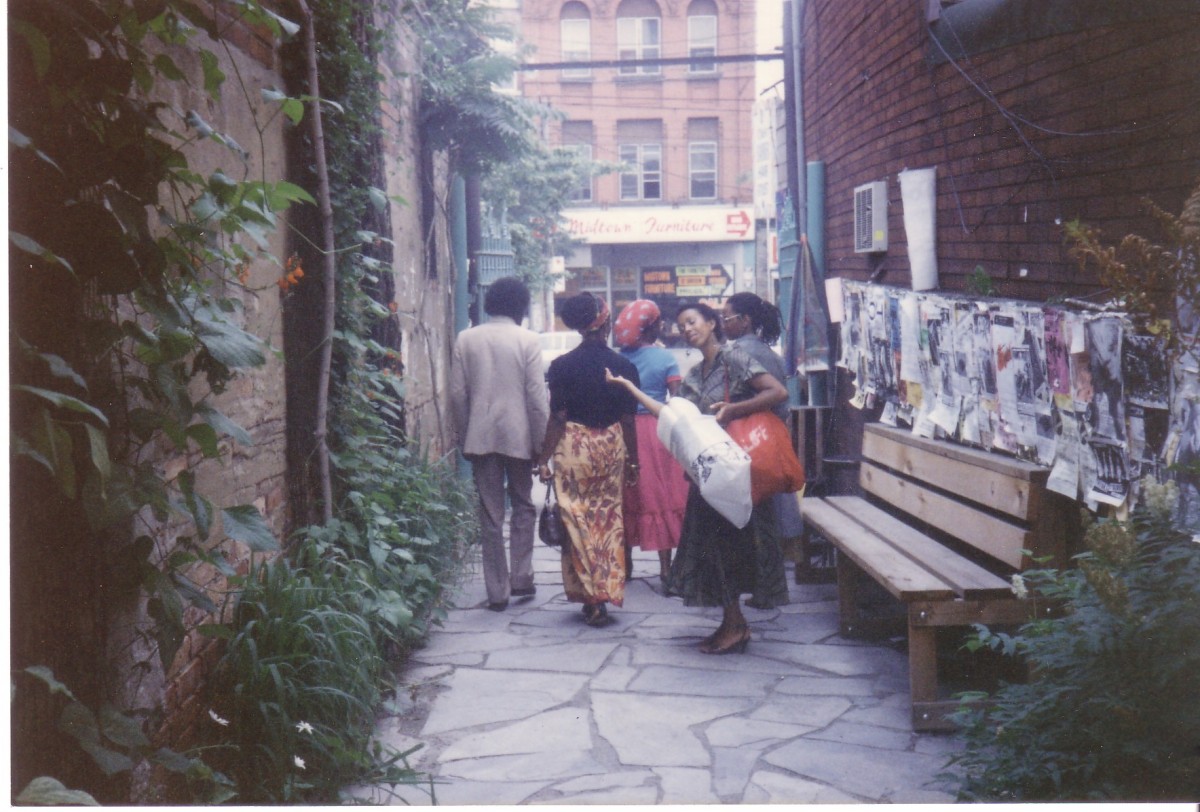Take a tour of the BamBoo through the gallery above. All photos noted as courtesy of Patti Habib are copyright the Estate of Richard O’Brien and the BamBoo.
Article originally published July 16, 2013 by The Grid online (thegridto.com).
Denise Benson revisits the legendary restaurant and club that served as an island oasis amid a rapidly transforming Queen West strip.
BY: DENISE BENSON
Club: BamBoo, 312 Queen St. W.
Years in operation: 1983-2002
History: Like the best of clubs, Toronto’s BamBoo was produced out of friendships, late-night revelry, and the desire to create a unique experience for a core community. The path that co-owners Richard O’Brien and Patti Habib took to get there was filled with fateful turns.
Both were in media and loved the nightlife: O’Brien had been a freelance journalist and live-music booker in California before returning to Toronto where he worked for TVOntario and later CBC, while Habib was a story producer for CBC Radio’s As It Happens. In the late 1970s, O’Brien, also known to friends as Ricci Moderne, partnered with infamous bon vivant Marcus O’Hara to produce annual St. Patrick’s Day parties, dubbed the Martian Awareness Ball (2013 marked its 35th anniversary), with Habib joining them a few years in.
Not long after, the trio—along with a group of friends that also included Dan Aykroyd, publicist Joanne Smale, John Ball, and Roots co-founder Michael Budman—put together an extensive business proposal to re-open The Embassy Tavern, a 1960s Yorkville bar and live-music venue. The plans did not come to fruition. Instead, in 1980, O’Brien and Habib launched the MBC boozecan in what had been her third-floor loft at the corner of Liberty and Jefferson.
“I had to move out,” laughs Habib during a lengthy phone chat. “Richard brought in all his records, and it became an after-hours club opened Mondays—a theatre night—and Thursdays only.”
For two years, the duo drew crowds to this largely deserted part of town we now know as Liberty Village. They booked bands that ranged from reggae to Rough Trade, from a newly formed Parachute Club to soul man Junior Walker. Jamaican patties were the only food served. Income earned at the door was hidden in record covers, and put aside with larger goals in mind.
Habib and O’Brien were also regulars at influential upstairs Queen West boozecan-cum-nightly-artist-hangout The Paper Door. As luck would have it, on an evening spent sitting on the venue’s back balcony, O’Brien looked down and spotted Wicker World, a shop at 312 Queen St. W. set back from the street. The location had been a laundry for years before, looked industrial, and piqued O’Brien’s curiosity. Not long after, he spotted a “For Lease” sign at the address, put down a deposit, and was given three months’ free rent in order to build his business.

























